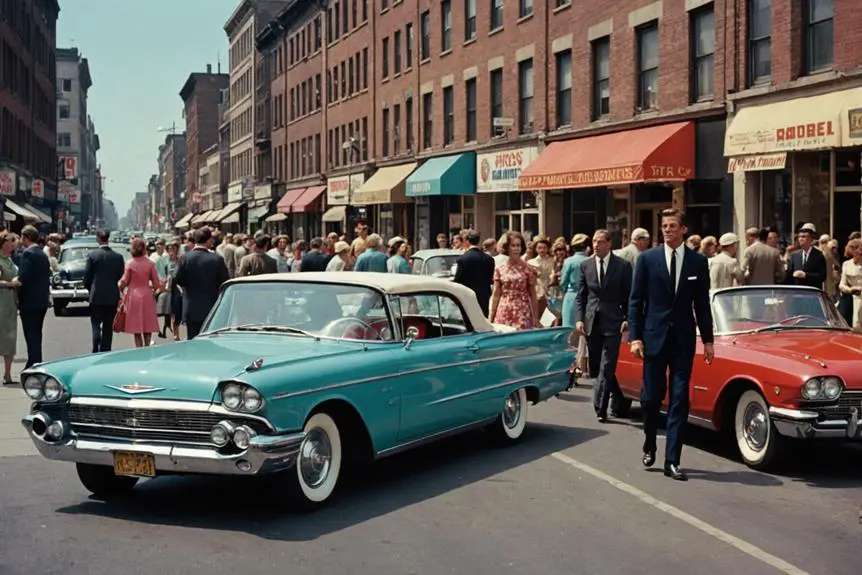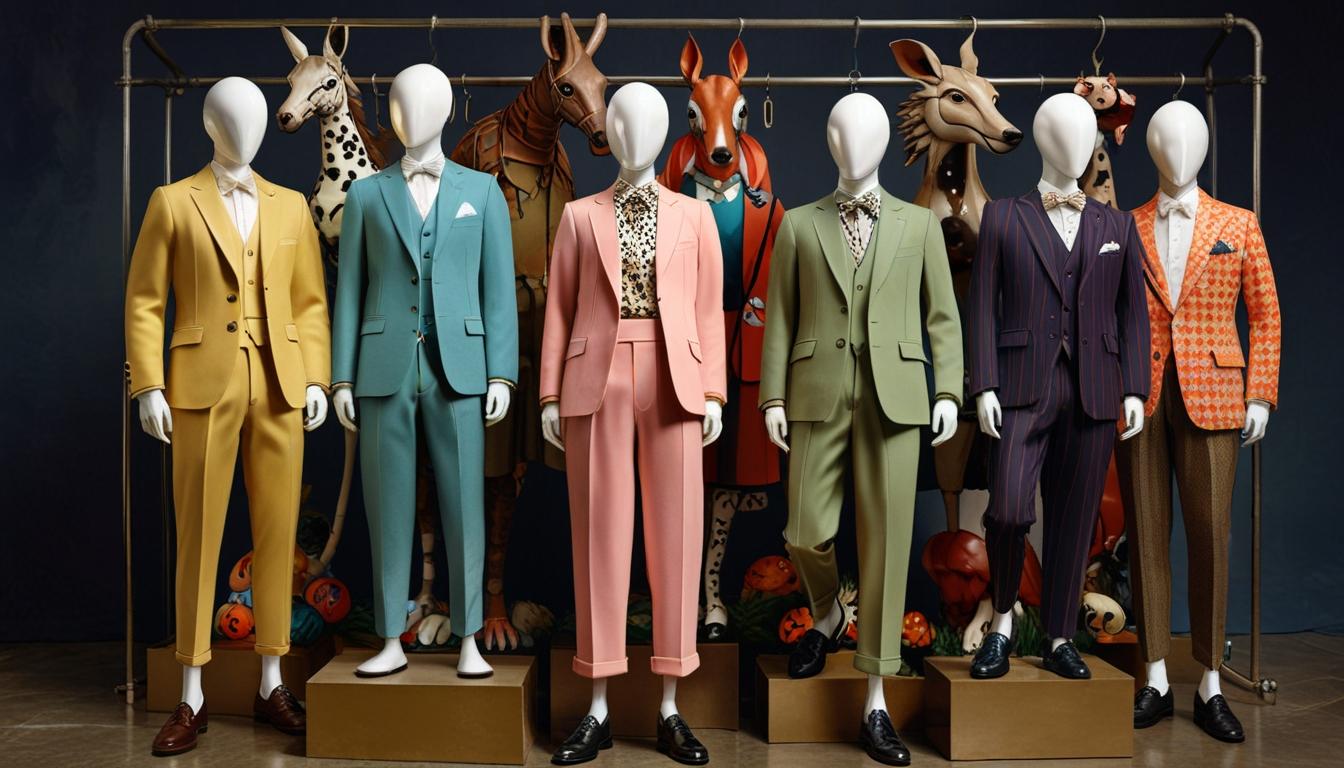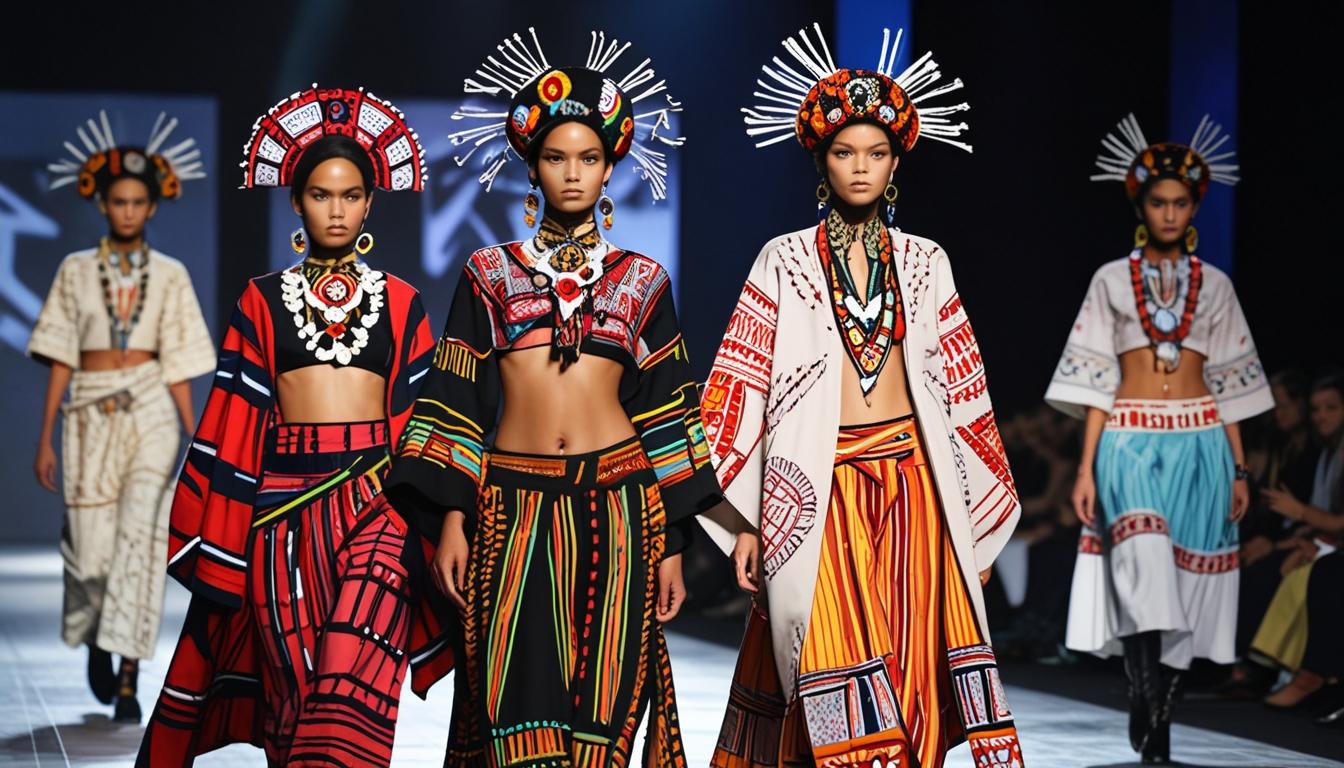When you think of the elegance and boldness of the early 1960s, images of Audrey Hepburn in "Breakfast at Tiffany's" might come to mind. This era marked a pivotal shift in fashion, blending youthful exuberance with sophisticated aesthetics. As you explore the rise of the miniskirt and the emergence of boutique culture, you'll notice how these trends not only defined a generation but also challenged societal norms. What sparked these transformations, and how did they influence the styles we see today?
Key Womenswear Trends
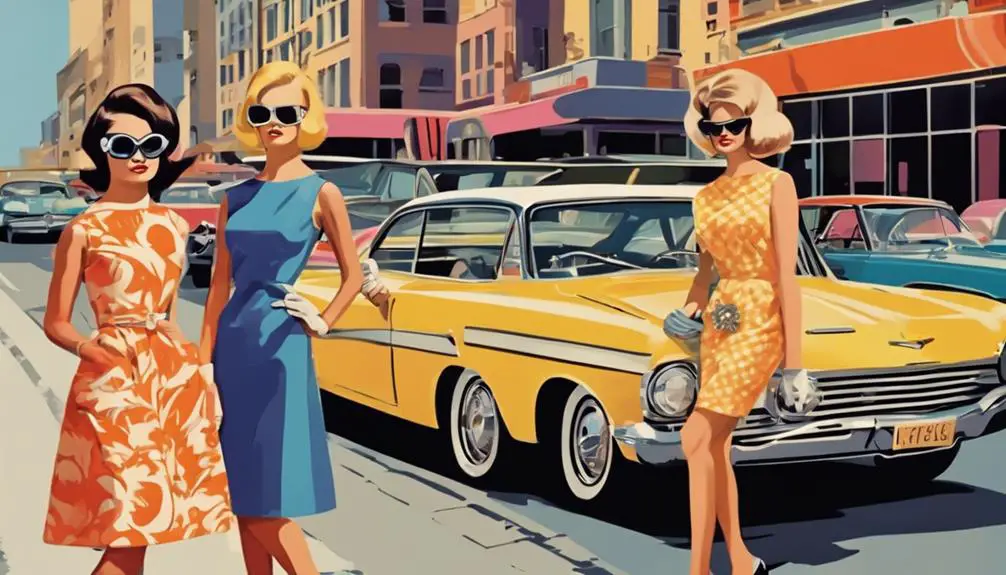
In the early 1960s, womenswear showcased a blend of lady-like elegance and youthful playfulness. You could see this in the designs of influential figures like Jacqueline Kennedy, who popularized boxy skirt suits and luxurious coats, complete with coordinating accessories. Designers such as Hubert de Givenchy and Cristóbal Balenciaga emphasized structured silhouettes and refined tailoring, setting a high standard in womens clothing.
This era also saw the emergence of brands like Tommy Hilfiger, which would later influence fashion trends with their preppy styles and unique logo designs, reflecting a cultural shift in the industry towards casual elegance and accessibility. Identifying vintage Tommy Hilfiger was essential for collectors and fashion enthusiasts alike.
As the decade unfolded, fashion evolved from mid-length skirts and tailored dresses reminiscent of the 1950s to more vibrant and youthful styles. Bright colors and bold patterns emerged, reflecting the burgeoning youth culture of the time. The introduction of lightweight synthetic materials revolutionized the way women approached fashion, allowing for greater comfort and ease of care.
You might also notice how the late 1960s began to embrace casual styles, influenced by the hippie movement. This alteration brought forth flowing skirts and maxi dresses, alongside a greater acceptance of eclectic and bohemian aesthetics in womenswear. Yet, through it all, the iconic black dress remained a staple, serving as a versatile piece that could easily shift from day to night.
The early 1960s truly marked a fascinating time in fashion, where structured silhouettes met playful designs, making every outing an opportunity to express individuality. Whether you favored tailored pieces or the emerging casual styles, this era offered something for every woman looking to make a statement.
The Rise of the Miniskirt
The miniskirt revolutionized women's fashion in the mid-1960s, capturing the spirit of youth and liberation. Popularized by the innovative designer Mary Quant, the miniskirt marked a bold departure from traditional below-the-knee skirts, embodying the essence of the youthquake movement. This daring style became a powerful symbol of female liberation, as young women sought to express their individuality and challenge conservative norms that had dominated the previous decade.
The significance of this era is echoed in fashion history, as seen in brands like Ralph Lauren, which also embraced cultural shifts in their designs in later decades, particularly through sub-brands like Polo Sport that resonated with youthful rebellion and creativity identifying vintage Ralph Lauren.
Mary Quant's boutique, Bazaar, became a pivotal space where the energy of the era came to life. Her prolific output of bold designs resonated deeply with teenagers, turning the miniskirt into more than just an article of clothing—it transformed into a fashion statement that echoed the growing desire for freedom and self-expression.
Alongside the miniskirt, the minidress emerged as a popular variation, further embracing casual styles that defined the decade.
As the miniskirt gained widespread acceptance, it coincided with a broader cultural shift, intertwining with the sexual revolution. This era's fashion choices reflected a rebellion against conservative norms, encouraging women to embrace their bodies and assert their independence.
The miniskirt wasn't merely a piece of clothing; it was a declaration of confidence and a celebration of youthful exuberance.
In this vibrant landscape of fashion, the rise of the miniskirt symbolizes a significant turning point, where women began to assert their identities through style, forever altering the fashion narrative.
Menswear Innovations
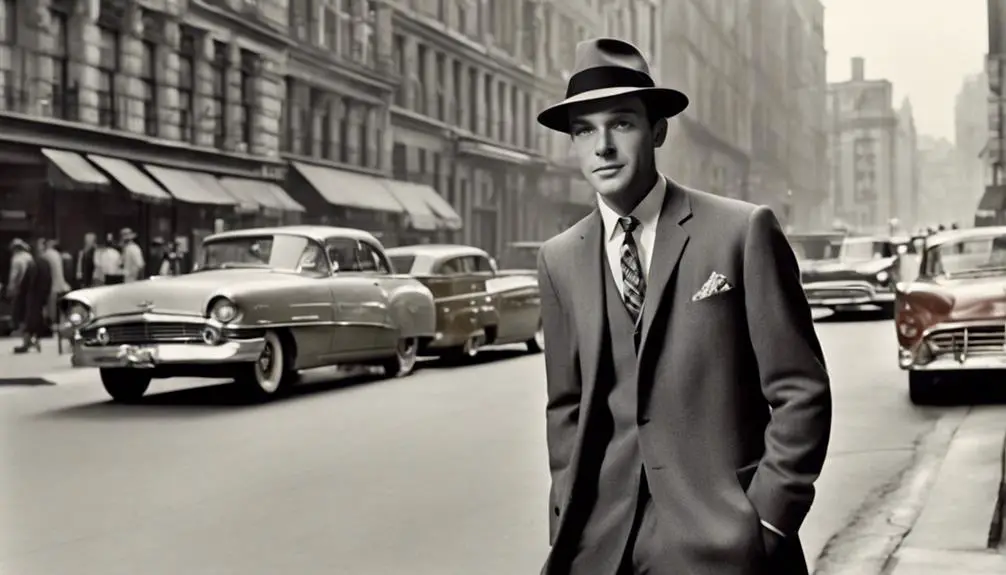
As women's fashion embraced bold statements like the miniskirt, menswear simultaneously underwent a vibrant transformation that reflected the era's shifting cultural landscape. The early 1960s marked a departure from traditional styles, with rock stars like Jimi Hendrix and Mick Jagger leading the charge into new domains of mens fashion. Their flamboyant styles introduced tailored suits and military jackets, which became iconic symbols of the time, mirroring the cultural shifts seen in brands like Billabong's evolution that aligned with the values of their communities.
The Beatles played a significant role in this evolution, popularizing collarless jackets and slim-fitting trousers, which allowed men to express themselves with a newfound sense of individuality. Lightweight fabrics emerged as a game-changer, replacing the heavier materials of the past and making clothing more comfortable and accessible for everyday wear. You could easily see these innovations in the psychedelic patterns that adorned many outfits, blending artistic expression with fashion.
Military elements gained popularity as well, famously showcased on the cover of "Sgt. Pepper's Lonely Hearts Club Band." This blend of psychedelic and military-inspired designs made a bold statement, embodying the era's spirit of rebellion and creativity.
As the decade progressed, the focus on vintage clothing and Eastern influences began to emerge, with designers incorporating sustainable materials and styles into their collections, further reflecting broader cultural changes.
In this exciting period of menswear innovations, you can see how each element—from collarless jackets to vibrant patterns—created a style that wasn't just fashionable but also a representation of a generation's desires and aspirations.
Children's Fashion Evolution
Children's fashion in the early 1960s embraced a playful spirit, reflecting the vibrant cultural shifts of the time. This era saw a delightful transformation, as girls traded the structured styles of the previous decade for full skirts, A-line silhouettes, and babydoll styles. These designs often featured bright colors and playful patterns, making every outfit an expression of youthful exuberance.
You could easily spot young girls twirling in their colorful dresses, embodying the fun and freedom that defined the decade.
Boys' clothing also experienced a rejuvenating makeover. The introduction of tailored suits, complete with vibrant colors and patterns, allowed boys to step out in style for formal occasions. Cuffed jeans and corduroy pants became staples in their wardrobes, pairing effortlessly with plaid blazers for a dapper look.
This shift toward more casual styles marked a significant change, emphasizing comfort while still looking sharp.
The adoption of synthetic materials played an essential role in this evolution. These fabrics not only offered ease of care but also provided a comfortable fit, perfect for active children. As a result, playful patterns and expressive styles flourished, mirroring broader trends in adult fashion.
Children's fashion in the early 1960s was all about embracing creativity and individuality, allowing kids to express themselves through their clothing. With every outfit, they celebrated a newfound sense of freedom, setting the stage for future generations to explore even more diverse fashion possibilities.
Cultural Influences on Fashion
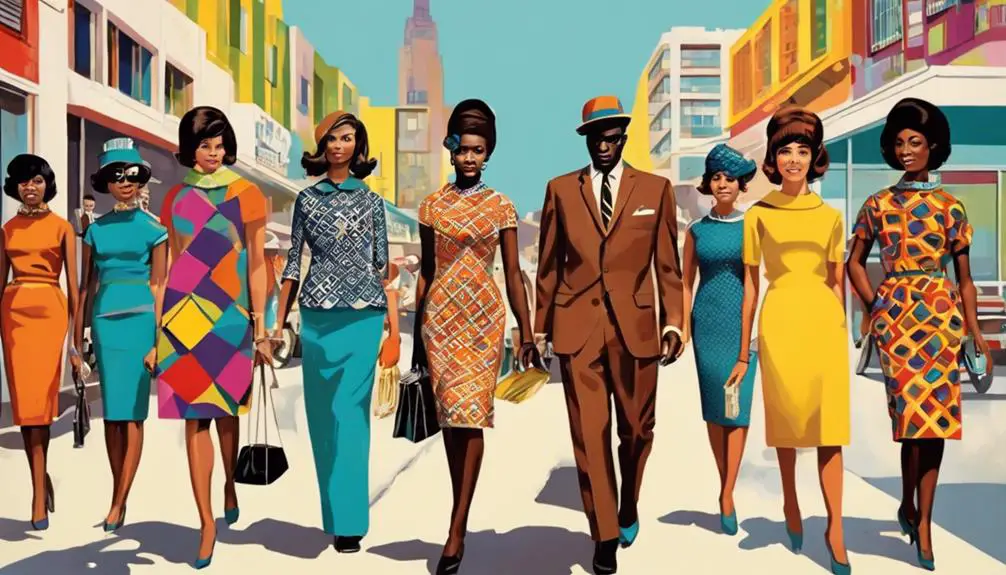
Fashion in the early 1960s wasn't just about styles; it was a reflection of the vibrant cultural landscape that surrounded it. The rise of youth culture brought a fresh energy to the fashion scene, with designers like Mary Quant leading the charge. Her revolutionary miniskirt became a symbol of youthful rebellion and freedom, appealing directly to teenagers enthusiastic to express themselves.
This era also saw the emergence of distinctive Harley Davidson clothing that embodied the spirit of individuality and rebellion, further influencing fashion trends. At the same time, Jacqueline Kennedy emerged as a fashion icon, embodying grace and sophistication with her boxy skirt-suits and luxurious coats, setting trends that many women admired and emulated.
As the decade progressed, countercultural movements began to shape the fashion narrative. The hippie aesthetic introduced flowing skirts, tie-dye patterns, and an embrace of secondhand clothing, emphasizing individuality and self-expression. This shift marked a departure from the refined styles of earlier years, showcasing the evolving tastes of a generation seeking to break free from tradition.
Meanwhile, the emergence of boutiques, particularly in areas like Carnaby Street, revolutionized the shopping experience. These trendy shops offered affordable options that catered specifically to the youth market, challenging the Parisian fashion dominance.
With a diverse array of fashion trends emerging, designers like Hubert de Givenchy and Cristóbal Balenciaga initially ruled the scene, but the new wave of talent reflected the dynamic cultural landscape. Ultimately, early 1960s fashion was a vibrant tapestry woven from the threads of youth culture, elegance, and rebellion, creating a legacy that still resonates today.
